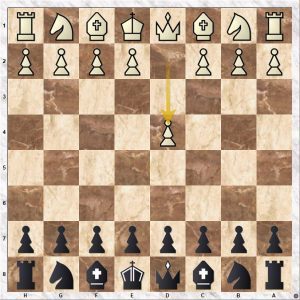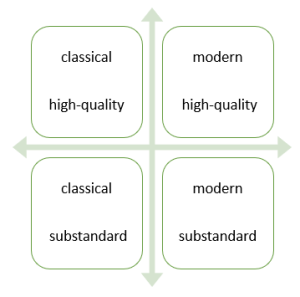
In my opinion, it is highly recommendable to take a methodical approach to building the opening repertoire. Being aimless can lead to the following problems:
1. You learn bad openings
What is good and bad can be determined objectively based on the evaluation of the starting position by engine and database. According to the engine, White’s advantage is roughly 0.35 pawn units in size. And a look into the database reveals, that White’s expected value is supposed to be about 54%. By using these benchmarks, you can measure the quality of your individual opening or variation.
I am quite sure, that many chess players don’t have a scientific approach, at least not when it comes to chess. How else can it be explained, that the King’s Indian Defense is such a popular opening? The KID aficionado starts the game being down between 0.6 and 1.0 pawn units, which is, of course, a blatant handicap.
But please don’t let me be misunderstood. As a former tournament pro, I am a pragmatist first and foremost. Anything that works is okay. When your regular opponents on your playing level cannot handle the King’s Indian, this opening is just wonderful. But don’t lie to yourself by playing an opening just because you think it’s cool, when the results might suggest otherwise.
2. You learn good openings that don’t suit you
The quality of an opening is one thing, your personal resources are another. We need to find quality openings that suit our style, our tactical and strategic skills and the amount of time we have available. If your own resource profile is not taken into account, the results will suffer.
The Matrix
In order to avoid these problems, the following simplified model, which classifies openings within the framework of a matrix, will hopefully give you good guidance. In order to be more precise, one could use the axes as a continuum or introduce gradations or even further dimensions, but none of this is necessary for our purpose. We just roughly differentiate between modern and classic openings, and between those with a high quality and a low quality.

Modern openings tend to be more demanding from a strategic point of view and feature a higher degree of asymmetry and imbalances. This is relevant for black players, who want to play for a win. Ideally, however, the black player’s ambitions should not lead him to leave the path of solidity. He should make his choice dependent on whether he tends towards a classic or modern view of the game, but stay in the realm of the high-quality openings. Players with a universal chess education have a wide choice and can build a versatile repertoire, ready to adapt to the occasion.
